Deck 4: Inverse, Exponential, and Logarithmic Functions
Question
Question
Question
Question
Question
Question
Question
Question
Question
Question
Question
Question
Question
Question
Question
Question
Question
Question
Question
Question
Question
Question
Question
Question

Unlock Deck
Sign up to unlock the cards in this deck!
Unlock Deck
Unlock Deck
1/24
Play
Full screen (f)
Deck 4: Inverse, Exponential, and Logarithmic Functions
1
The graph of a one-to-one function f is shown. Use the reflection property to sketch the graph of 
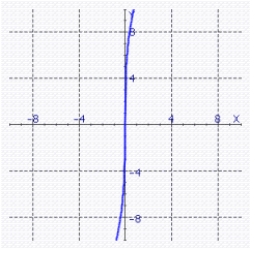
A)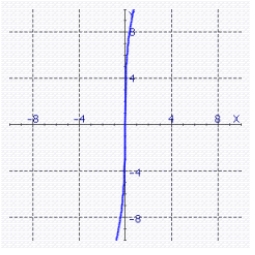
B)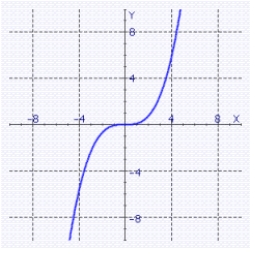
C)
D)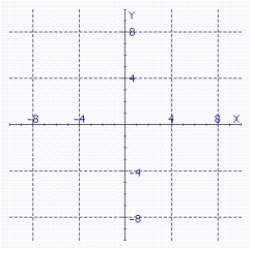


A)

B)

C)

D)

C
2
In 1980, the population of blue whales in the southern hemisphere was thought to number 5,000. The population N(t) has been decreasing according to the formula  where t is in years and t = 0 corresponds to 1980. Predict the population in the year 2010 if this trend continues.
where t is in years and t = 0 corresponds to 1980. Predict the population in the year 2010 if this trend continues.
A)
B)
C)
D)
E)
 where t is in years and t = 0 corresponds to 1980. Predict the population in the year 2010 if this trend continues.
where t is in years and t = 0 corresponds to 1980. Predict the population in the year 2010 if this trend continues.A)

B)

C)

D)

E)

C
3
Find the inverse function of .
A)
B)
C)
D)
E)
A)
B)
C)
D)
E)
4
The radioactive bismuth isotope 210 Bi has a half-life of 5 days. If there is 100 milligrams of 210 Bi present at t = 0, then the amount f(t) remaining after t days is given by:  How much 210 Bi remains after 25 days?
How much 210 Bi remains after 25 days?
A) 3.125 milligrams
B) 12.125 milligrams
C) 5.125 milligrams
D) 8.125 milligrams
E) 2.125 milligrams
 How much 210 Bi remains after 25 days?
How much 210 Bi remains after 25 days?A) 3.125 milligrams
B) 12.125 milligrams
C) 5.125 milligrams
D) 8.125 milligrams
E) 2.125 milligrams

Unlock Deck
Unlock for access to all 24 flashcards in this deck.
Unlock Deck
k this deck
5
Write the expression as one logarithm. 
A)
B)
C)
D)
E)

A)

B)

C)

D)

E)


Unlock Deck
Unlock for access to all 24 flashcards in this deck.
Unlock Deck
k this deck
6
Find an exponential function of the form f (x) = ba x that has the given y-intercept and passes through the point P: y-intercept = 125; P (3,1);
A)
B)
C)
D)
E)
A)

B)

C)

D)

E)


Unlock Deck
Unlock for access to all 24 flashcards in this deck.
Unlock Deck
k this deck
7
Solve the equation. 
A)
B)
C)
D)
E)

A)

B)

C)

D)

E)


Unlock Deck
Unlock for access to all 24 flashcards in this deck.
Unlock Deck
k this deck
8
The air pressure p (h) (in lb/ in 2 ) at an altitude of h feet above sea level may be approximated by the formula  At approximately what altitude h is the air pressure 9 lb/ in 2 ?
At approximately what altitude h is the air pressure 9 lb/ in 2 ?
A) 12,743 ft
B) 1,274 ft
C) 17,123 ft
D) 5,534 ft
E) 553 ft
 At approximately what altitude h is the air pressure 9 lb/ in 2 ?
At approximately what altitude h is the air pressure 9 lb/ in 2 ?A) 12,743 ft
B) 1,274 ft
C) 17,123 ft
D) 5,534 ft
E) 553 ft

Unlock Deck
Unlock for access to all 24 flashcards in this deck.
Unlock Deck
k this deck
9
Solve the equation: 
A)
B)
C)
D)
E)

A)

B)

C)

D)

E)


Unlock Deck
Unlock for access to all 24 flashcards in this deck.
Unlock Deck
k this deck
10
When the volume control on a stereo system is increased, the voltage across a loudspeaker changes from V 1 to V 2 , and the decibel increase is given by  Find the decibel increase if the voltage changes from 1.7 volts to 3 volts.
Find the decibel increase if the voltage changes from 1.7 volts to 3 volts.
A) db = 4.9
B) db = 8.7
C) db = 7.2
D) db = 11.4
E) db = 3.8
 Find the decibel increase if the voltage changes from 1.7 volts to 3 volts.
Find the decibel increase if the voltage changes from 1.7 volts to 3 volts.A) db = 4.9
B) db = 8.7
C) db = 7.2
D) db = 11.4
E) db = 3.8

Unlock Deck
Unlock for access to all 24 flashcards in this deck.
Unlock Deck
k this deck
11
Change to logarithmic form. 
A) log 100 = 3
B) ln 100 = 2
C) ln 100 = 3
D) log 100 = 2
E) log 2 = 200

A) log 100 = 3
B) ln 100 = 2
C) ln 100 = 3
D) log 100 = 2
E) log 2 = 200

Unlock Deck
Unlock for access to all 24 flashcards in this deck.
Unlock Deck
k this deck
12
Express in terms of logarithms of x, y, z, or w. 
A) 4log 7 ( x ) + log 7 ( w ) - 3log 7 ( y ) - 2log 7 ( z )
B) 4log 7 ( x ) + log 7 ( w ) + 2log 7 ( y ) + 3log 7 ( z )
C) log 7 ( x ) + log 7 ( w ) - log 7 ( y ) + log 7 ( z )
D) 4log 7 ( x ) + log 7 ( w ) - 2log 7 ( y ) - 3log 7 ( z )
E) 4log 7 ( x ) - log 7 ( w ) + 2log 7 ( y ) - 3log 7 ( z )

A) 4log 7 ( x ) + log 7 ( w ) - 3log 7 ( y ) - 2log 7 ( z )
B) 4log 7 ( x ) + log 7 ( w ) + 2log 7 ( y ) + 3log 7 ( z )
C) log 7 ( x ) + log 7 ( w ) - log 7 ( y ) + log 7 ( z )
D) 4log 7 ( x ) + log 7 ( w ) - 2log 7 ( y ) - 3log 7 ( z )
E) 4log 7 ( x ) - log 7 ( w ) + 2log 7 ( y ) - 3log 7 ( z )

Unlock Deck
Unlock for access to all 24 flashcards in this deck.
Unlock Deck
k this deck
13
Sketch the graph of 
A)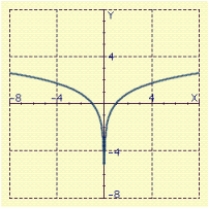
B)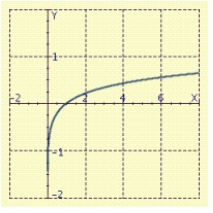
C)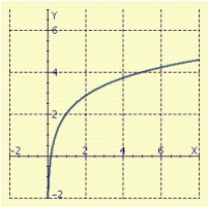
D)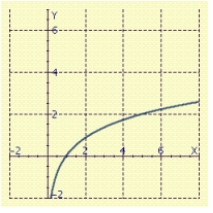
E)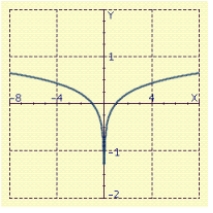

A)

B)

C)

D)

E)


Unlock Deck
Unlock for access to all 24 flashcards in this deck.
Unlock Deck
k this deck
14
If $900 is deposited in a savings account that pays interest at a rate of  % per year compounded continuously, find the balance after 7 years.
% per year compounded continuously, find the balance after 7 years.
A) $1,418.56
B) $581.08
C) $1,369.77
D) $1,393.95
E) $3,484.87
 % per year compounded continuously, find the balance after 7 years.
% per year compounded continuously, find the balance after 7 years.A) $1,418.56
B) $581.08
C) $1,369.77
D) $1,393.95
E) $3,484.87

Unlock Deck
Unlock for access to all 24 flashcards in this deck.
Unlock Deck
k this deck
15
How much money, invested at an interest rate of 11% per year compounded continuously, will amount to $105,000 after 15 years?
A) $20,165.24
B) $117,209.20
C) $5,467.33
D) $40,330.48
E) $104,983.26
A) $20,165.24
B) $117,209.20
C) $5,467.33
D) $40,330.48
E) $104,983.26

Unlock Deck
Unlock for access to all 24 flashcards in this deck.
Unlock Deck
k this deck
16
The graph of a one-to-one function f is shown. Find the domain D and range R of the inverse function  .
. 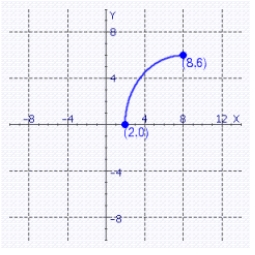
A)
B)
C)
D)
E)
 .
. 
A)

B)

C)

D)

E)


Unlock Deck
Unlock for access to all 24 flashcards in this deck.
Unlock Deck
k this deck
17
Some lending institutions calculate the monthly payment M on a loan of L dollars at an interest rate r (expressed as a decimal) by using the formula: ![<strong>Some lending institutions calculate the monthly payment M on a loan of L dollars at an interest rate r (expressed as a decimal) by using the formula: where k = [1 + ( r / 12 )]<sup> 12</sup><sup>t</sup><sup> </sup> and t is the number of years that the loan is in effect. An automobile dealer offers customers no-down-payment 8-year loans at an interest rate of 10%. If a customer can afford to pay $122 per month, find the price of the most expensive car that can be purchased.</strong> A) $ 8,050.00 B) $ 8,045.62 C) $ 8,039.98 D) $ 8,048.79 E) $ 8,029.63](https://d2lvgg3v3hfg70.cloudfront.net/TB6019/11ea9539_8e3a_bd86_9016_094d43cbd283_TB6019_11.jpg) where k = [1 + ( r / 12 )] 12t and t is the number of years that the loan is in effect. An automobile dealer offers customers no-down-payment 8-year loans at an interest rate of 10%. If a customer can afford to pay $122 per month, find the price of the most expensive car that can be purchased.
where k = [1 + ( r / 12 )] 12t and t is the number of years that the loan is in effect. An automobile dealer offers customers no-down-payment 8-year loans at an interest rate of 10%. If a customer can afford to pay $122 per month, find the price of the most expensive car that can be purchased.
A) $ 8,050.00
B) $ 8,045.62
C) $ 8,039.98
D) $ 8,048.79
E) $ 8,029.63
![<strong>Some lending institutions calculate the monthly payment M on a loan of L dollars at an interest rate r (expressed as a decimal) by using the formula: where k = [1 + ( r / 12 )]<sup> 12</sup><sup>t</sup><sup> </sup> and t is the number of years that the loan is in effect. An automobile dealer offers customers no-down-payment 8-year loans at an interest rate of 10%. If a customer can afford to pay $122 per month, find the price of the most expensive car that can be purchased.</strong> A) $ 8,050.00 B) $ 8,045.62 C) $ 8,039.98 D) $ 8,048.79 E) $ 8,029.63](https://d2lvgg3v3hfg70.cloudfront.net/TB6019/11ea9539_8e3a_bd86_9016_094d43cbd283_TB6019_11.jpg) where k = [1 + ( r / 12 )] 12t and t is the number of years that the loan is in effect. An automobile dealer offers customers no-down-payment 8-year loans at an interest rate of 10%. If a customer can afford to pay $122 per month, find the price of the most expensive car that can be purchased.
where k = [1 + ( r / 12 )] 12t and t is the number of years that the loan is in effect. An automobile dealer offers customers no-down-payment 8-year loans at an interest rate of 10%. If a customer can afford to pay $122 per month, find the price of the most expensive car that can be purchased.A) $ 8,050.00
B) $ 8,045.62
C) $ 8,039.98
D) $ 8,048.79
E) $ 8,029.63

Unlock Deck
Unlock for access to all 24 flashcards in this deck.
Unlock Deck
k this deck
18
Write the expression as one logarithm. 9ln ( x ) - 7ln  - 4ln ( xy )
- 4ln ( xy )
A) ln ( x 9 - y 7 - ( xy ) 4 )
B) ln ( 9x - 7y - 4xy )
C) ln ( x 3 y 5 )
D) ln ( x 5 y 3 )
 - 4ln ( xy )
- 4ln ( xy )A) ln ( x 9 - y 7 - ( xy ) 4 )
B) ln ( 9x - 7y - 4xy )
C) ln ( x 3 y 5 )
D) ln ( x 5 y 3 )

Unlock Deck
Unlock for access to all 24 flashcards in this deck.
Unlock Deck
k this deck
19
Sketch the graph of 
A)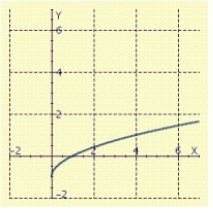
B)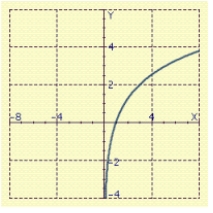
C)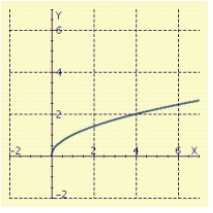
D)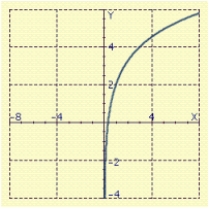
E)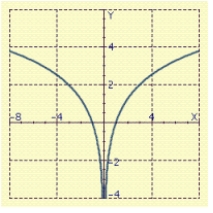

A)

B)

C)

D)

E)


Unlock Deck
Unlock for access to all 24 flashcards in this deck.
Unlock Deck
k this deck
20
Use the theorem on inverse functions to determine whether f and g are inverse functions of each other.
A) f and g are not inverse functions of each other.
B) f and g are inverse functions of each other.
A) f and g are not inverse functions of each other.
B) f and g are inverse functions of each other.

Unlock Deck
Unlock for access to all 24 flashcards in this deck.
Unlock Deck
k this deck
21
Solve the equation without using a calculator. 
A) 1 and 10
B) 2 and 1,000,000
C) 1,000,000
D) 1 and 10,000,000
E) 10,000,000

A) 1 and 10
B) 2 and 1,000,000
C) 1,000,000
D) 1 and 10,000,000
E) 10,000,000

Unlock Deck
Unlock for access to all 24 flashcards in this deck.
Unlock Deck
k this deck
22
Find the solution of the equation. 
A)
B)
C)
D)
E)

A)

B)

C)

D)

E)


Unlock Deck
Unlock for access to all 24 flashcards in this deck.
Unlock Deck
k this deck
23
Use common logarithms to solve for x in terms of y. 
A)
B)
C)
D)
E)

A)

B)

C)

D)

E)


Unlock Deck
Unlock for access to all 24 flashcards in this deck.
Unlock Deck
k this deck
24
An economist suspects that the points lie on the graph of , where and k are constants. If the data points have three-decimal-place accuracy, is this suspicion correct?
A) The suspicion is incorrect
B) The suspicion is correct
A) The suspicion is incorrect
B) The suspicion is correct

Unlock Deck
Unlock for access to all 24 flashcards in this deck.
Unlock Deck
k this deck



